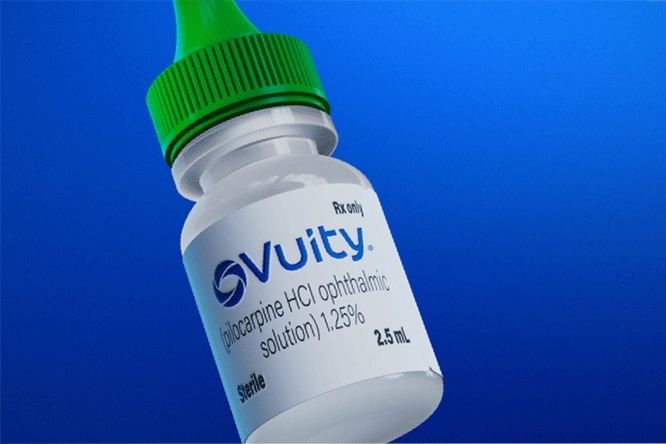
Thrombolytic drugs, often referred to as “clot busters,” are a class of medications designed to dissolve blood clots (thrombi) that have formed in blood vessels. These clots can obstruct blood flow, leading to life-threatening conditions such as heart attacks, strokes, and pulmonary embolisms. By restoring blood flow, thrombolytics aim to limit tissue damage and improve patient outcomes. Their administration requires precise medical judgment due to inherent risks, particularly bleeding.
Classification of Thrombolytic Drugs
Thrombolytic drugs are primarily classified based on their origin, fibrin specificity, and pharmacokinetic properties, which influence their clinical applications and safety profiles. They are broadly categorized into two generations:
A. First-Generation Thrombolytics (Non-Fibrin-Specific)
These agents activate circulating plasminogen throughout the bloodstream, leading to a systemic lytic state. While effective at dissolving clots, they also degrade circulating fibrinogen, increasing the risk of bleeding complications due to global hypocoagulability.
- Streptokinase (SK):
- Derived from Streptococcus haemolyticus.
- Forms a 1:1 complex with plasminogen, exposing an active site that converts other plasminogen molecules into plasmin.
- It is not fibrin-specific, leading to systemic degradation of fibrinogen, Factor V, and Factor VIII.
- Immunogenic, meaning prior exposure can lead to antibody formation, rendering subsequent doses less effective or causing allergic reactions.
- Urokinase (UK):
- Originally isolated from human urine, now produced via recombinant DNA technology.
- A direct activator of plasminogen, converting it to plasmin.
- Also non-fibrin-specific, leading to systemic fibrinolysis.
- Less immunogenic than streptokinase.
B. Second-Generation Thrombolytics (Fibrin-Specific, Tissue Plasminogen Activator (t-PA) Analogues)
These agents are engineered to preferentially activate plasminogen that is already bound to fibrin within a clot. This “fibrin-specificity” theoretically allows for more targeted clot dissolution with less systemic fibrinogenolysis, potentially reducing the risk of bleeding compared to first-generation agents.
- Alteplase (Recombinant Tissue Plasminogen Activator – rt-PA):
- A recombinant form of human tissue plasminogen activator.
- High affinity for fibrin-bound plasminogen, making it relatively fibrin-specific at lower doses. At higher doses, its specificity decreases.
- Possesses a very short half-life, necessitating continuous intravenous infusion.
- Reteplase (r-PA):
- A modified recombinant t-PA derived through genetic engineering.
- Has a longer half-life than alteplase, allowing for bolus administration (usually two boluses 30 minutes apart).
- Less fibrin-specific than alteplase, but still more targeted than first-generation drugs.
- Tenecteplase (TNK-t-PA):
- A genetically engineered variant of alteplase with several modifications.
- Exhibits greater fibrin specificity, a longer half-life (allowing for single bolus administration), and increased resistance to inhibition by plasminogen activator inhibitor-1 (PAI-1).
- These properties make it potentially more convenient and possibly safer than alteplase.
Mechanism of Action
Thrombolytic drugs act by mimicking or enhancing the body’s natural fibrinolytic system. Their fundamental mechanism involves the conversion of plasminogen, an inactive proenzyme found in plasma and within clots, into its active proteolytic enzyme form, plasmin.
- Plasminogen Activation: All thrombolytic agents function as plasminogen activators.
- Plasmin Generation: Once activated, plasminogen is cleaved to generate plasmin.
- Fibrin Degradation: Plasmin then degrades fibrin, the primary structural component of a blood clot (thrombus), into soluble fibrin degradation products (FDPs). This breakdown weakens the clot’s structure, leading to its dissolution and the restoration of blood flow through the occluded vessel.
Differences in Mechanism:
- Non-Fibrin-Specific Agents (Streptokinase, Urokinase): These agents activate plasminogen indiscriminately, whether it’s circulating in the plasma or bound to fibrin within a clot. This leads to generalized systemic fibrinolysis, resulting in the breakdown of not only the target clot but also circulating fibrinogen and other coagulation factors, contributing to a systemic hemorrhagic state.
- Fibrin-Specific Agents (Alteplase, Reteplase, Tenecteplase): These agents have a higher affinity for plasminogen that is already bound to fibrin within a thrombus. By preferentially activating clot-bound plasminogen, they generate plasmin primarily at the site of the clot. This targeted action theoretically minimizes systemic fibrinogenolysis and reduces the risk of bleeding complications. However, at high doses, even these agents can lose some of their fibrin specificity.
Clinical Uses
Thrombolytic drugs are indicated for a range of acute thrombotic conditions where rapid restoration of blood flow is critical to salvage ischemic tissue and preserve organ function.
- Acute Myocardial Infarction (AMI):
- Used in patients with ST-segment elevation myocardial infarction (STEMI) when primary percutaneous coronary intervention (PCI) is not readily available within a timely manner. The goal is to rapidly lyse the coronary artery thrombus, restore blood flow to the ischemic myocardium, and preserve heart muscle function.
- Acute Ischemic Stroke (AIS):
- Alteplase is the mainstay of thrombolytic therapy for AIS. It must be administered intravenously within a narrow therapeutic window (typically within 3 to 4.5 hours of symptom onset) to be effective and minimize bleeding risks. The aim is to dissolve the clot obstructing a cerebral artery, restoring blood flow to the ischemic brain tissue.
- Acute Massive Pulmonary Embolism (PE):
- Indicated for patients with acute PE accompanied by hemodynamic instability (e.g., hypotension, shock) due to obstruction of pulmonary arteries by large blood clots. Thrombolysis rapidly reduces pulmonary artery pressure and improves cardiovascular function, which can be life-saving.
- Deep Vein Thrombosis (DVT) with Limb Compromise:
- While anticoagulation is the primary treatment for DVT, thrombolysis (often catheter-directed) may be considered for patients with extensive DVT causing severe limb ischemia or phlegmasia cerulea dolens to prevent permanent venous damage or limb loss.
- Occluded Central Venous Catheters:
- Low-dose thrombolytics (e.g., alteplase) can be instilled into central venous catheters (e.g., Hickman lines, Port-A-Caths) to clear occlusions caused by fibrin formation within the lumen or at the tip, restoring catheter patency.
Adverse Effects
The most significant and common adverse effect of thrombolytic drugs is bleeding, which can range from minor to life-threatening.
- Bleeding:
- Intracranial Hemorrhage (ICH): The most feared complication, often leading to severe neurological deficits or death. The risk is present with all thrombolytics but varies based on the drug, dose, and patient characteristics (e.g., age, hypertension, stroke severity).
- Gastrointestinal Bleeding: Can include hematemesis, melena, or occult blood loss.
- Genitourinary Bleeding: Hematuria.
- Retroperitoneal Hemorrhage: Can occur, particularly following invasive procedures.
- Surface Bleeding: At injection sites, catheter insertion sites, or from minor cuts/wounds.
- Ecchymoses/Petechiae: Widespread bruising or small red spots on the skin.
- Allergic Reactions (primarily Streptokinase):
- Due to its bacterial origin, streptokinase can cause hypersensitivity reactions, including rash, fever, chills, bronchospasm, and, rarely, anaphylaxis. Subsequent exposure increases the risk. Other thrombolytics are generally less immunogenic.
- Hypotension:
- Can occur, particularly with rapid infusion of streptokinase, and may require slowing the infusion rate or administering intravenous fluids.
- Reperfusion Arrhythmias:
- Upon successful reperfusion of ischemic myocardium (e.g., in AMI), transient arrhythmias (e.g., accelerated idioventricular rhythm, ventricular premature beats) may occur. These are usually benign and self-limiting but warrant monitoring.
- Fever:
- A mild, transient fever can be observed, especially after streptokinase administration.
- Cholesterol Embolism:
- A rare but serious complication where cholesterol crystals dislodge from atheromatous plaques and embolize to distal vessels, causing organ damage.
Drug Interactions
Thrombolytic drugs interact primarily with other agents that affect coagulation or platelet function, significantly increasing the risk of bleeding.
- Anticoagulants:
- Heparin (Unfractionated and Low Molecular Weight Heparin): Concomitant use with thrombolytics significantly increases the risk of bleeding due to their synergistic anticoagulant effects. Often, heparin is initiated after thrombolysis or in low, prophylactic doses.
- Warfarin and other Vitamin K Antagonists (VKAs): Patients on VKAs with an elevated International Normalized Ratio (INR) have a substantially higher bleeding risk if given thrombolytics.
- Direct Oral Anticoagulants (DOACs – e.g., Dabigatran, Rivaroxaban, Apixaban, Edoxaban): Patients on DOACs have an increased bleeding risk. Specific reversal agents for DOACs (e.g., idarucizumab for dabigatran, andexanet alfa for factor Xa inhibitors) may be considered in emergency situations where thrombolysis is urgently indicated.
- Antiplatelet Agents:
- Aspirin: Almost universally given concurrently with thrombolytics in AMI/AIS to prevent re-thrombosis. While beneficial, it adds to the bleeding risk.
- P2Y12 Inhibitors (e.g., Clopidogrel, Prasugrel, Ticagrelor): Often given as part of dual antiplatelet therapy after thrombolysis. Their combination with thrombolytics markedly increases bleeding risk.
- Nonsteroidal Anti-inflammatory Drugs (NSAIDs):
- Can impair platelet function and irritate the gastrointestinal mucosa, enhancing the risk of bleeding when used with thrombolytics.
Contraindications
Thrombolytic drugs are associated with a high risk of serious bleeding, particularly intracranial hemorrhage. Therefore, a careful assessment of risks versus benefits is crucial, and certain conditions absolutely preclude their use, while others represent relative contraindications.
A. Absolute Contraindications (Conditions with unacceptable risk of intracranial hemorrhage or other severe bleeding):
- Any prior intracranial hemorrhage (ICH).
- Known structural cerebral vascular lesion (e.g., arteriovenous malformation, aneurysm).
- Known malignant intracranial neoplasm.
- Ischemic stroke within 3 months (except acute ischemic stroke within 3-4.5 hours in selected patients).
- Active internal bleeding (e.g., gastrointestinal or genitourinary bleeding).
- Suspected aortic dissection.
- Significant closed-head or facial trauma within 3 months.
- Severe uncontrolled hypertension (e.g., systolic BP >185 mmHg or diastolic BP >110 mmHg, or aggressive antihypertensive treatment to achieve these limits).
- Bleeding diathesis (e.g., platelet count <100,000/µL, INR >1.7, aPTT > normal upper limit for relevant drug).
- Recent major surgery or trauma within 2-4 weeks.
- For streptokinase/anistreplase: Prior exposure to either drug within the last 6 months (due to potential for allergic reactions or resistance).
B. Relative Contraindications (Conditions where the risk of bleeding may outweigh the benefit, but careful consideration is warranted):
- History of chronic, severe, poorly controlled hypertension.
- History of ischemic stroke >3 months ago, without intracranial hemorrhage.
- Dementia.
- Known intracranial pathology not listed under absolute contraindications.
- Recent major surgery (<3 weeks), especially intracranial or spinal surgery.
- Recent internal bleeding (<2-4 weeks).
- Non-compressible vascular punctures.
- Pregnancy.
- Active peptic ulcer disease.
- **Oral anticoagulant therapy with an INR <1.7 or PT <15s.** (Note: INR >1.7 usually an absolute contraindication for AIS).
- For acute ischemic stroke:
- Symptoms of minor stroke.
- Symptoms rapidly improving or mild stroke.
- Seizure at onset with post-ictal residual neurological impairment.
- Major surgery or serious trauma within 14 days.
- Recent gastrointestinal or urinary tract hemorrhage within 21 days.
- Recent acute myocardial infarction within 3 months.
Conclusion
Thrombolytic drugs are highly potent and life-saving medications in the acute management of thrombotic disorders. Their ability to rapidly dissolve blood clots can prevent or minimize irreversible organ damage. However, their use is a delicate balance of potential benefit against significant risk, primarily severe hemorrhage. A thorough understanding of their classification, mechanisms, indications, adverse effects, interactions, and contraindications is paramount for healthcare professionals to ensure their safe and effective administration, leading to optimal patient outcomes. Careful patient selection, vigilant monitoring, and adherence to established protocols are essential for harnessing the therapeutic power of these critical agents.







